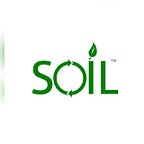A Rural Dilemma: Why Internet Access and IoT matter in Agriculture
The Internet of things (IoT) is a gamechanger. From trackers that monitor patient health conditions to security systems that you can control with your smartphone, there are certainly few areas of life that IoT hasn’t touched.
Or so it seems. In truth, about 4 billion people or 52% of the population do not have access to the Internet. And when there’s no Internet, IoT can’t work its wonders.
A growing problem
As it happens, many places with limited or no Internet connectivity tend to be rural areas. The reason is mostly due to economics: companies that put up expensive tech infrastructure are most likely to do it where they can get as many customers as possible.
And that would be cities, not the countryside. Unfortunately, urbanization is only accelerating; according to the United Nations, at least 54% of the global population resides in cities.
Believe it or not, about 60% of American farmers report they don’t have a reliable Internet connection to run their businesses. Farmers in the developing world have it worse as lack of infrastructure, geographical limitations, and political strife makes Internet connectivity more difficult.
IoT for a flourishing agriculture industry
The Internet is a source of vital information for people, and the same is true for farmers. The latest weather reports, crop prices, and pest outbreaks are just some of the information they need to make their businesses run smoothly.
But IoT can take things further and make a farmer’s job easier while making their land more productive. Below are just some of the potential applications of IoT in agriculture:
Smart tractors
IoT can allow farmers to automate menial tractor operations so that farmers have more time to perform more critical tasks.
Agricultural Drones
Farmers can use drones to monitor crop health. Likewise, drones can also serve as a delivery system for fertilizer or water.
Livestock trackers
Location beacons can be attached to cattle, sheep, and other livestock so farmers can track their location.
Smart Greenhouses
Growing crops can be made more efficient with a smart greenhouse where sensors automatically adjust light levels, temperature, and humidity to ensure optimum growing conditions at all times.
Water sensors
In areas where water is in short supply, sensors can be installed in water towers so farmers can better manage and utilize this limited resource.
A fresh perspective
One thing is clear: if IoT is to revolutionize agricultural practices, the way companies deliver Internet access to rural regions must change.
It’s no wonder why companies such as SOIL, which focuses on cleantech, have developed out-of-the-box solutions like the Griot IoT hardware-software platform.
Unlike other systems that use terrestrial connections such as cellular, WiFi, and Bluetooth technology, Griot enlists nanosatellites in low-earth orbit to deliver Internet access to even the remote places.
The platform also uses a powerful AI-at-the-edge engine that enables machine learning to further optimize farm operations. Moreover, all information transmitted on the Griot platform is encrypted by Blockchain-like, IOTA-distributed ledger technology.
Seeds of hope
There’s no doubt that IoT offers incredible potential to the agricultural sector. But it can only happen if we embrace a decentralized approach to connectivity, giving farmers equal access to fast and reliable Internet.
For more information about SOIL’s Griot IoT platform, visit:
ABOUT SOIL:
SOIL combines cleantech and IoT to produce products for on and off-grid consumers with the main focus of bringing power and connectivity everywhere. SOIL is headquartered in Atlanta, GA,
Sources:
How do farmers use the internet?, FarmProgress.com
https://www.farmprogress.com/story-how-farmers-use-internet-9-56691
IoT Applications in Agriculture, IOTForAll.com
https://www.iotforall.com/iot-applications-in-agriculture/
